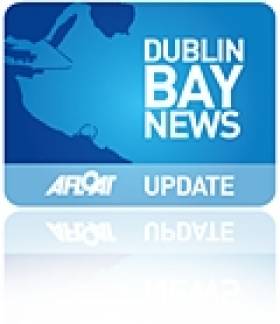Displaying items by tag: Irish maritime heritage
Dun Laoghaire's Maritime Museum to Re-Open
#MARITIME MUSEUM-The much awaited re-opening of the Maritime Museum in Dun Laoghaire, Co. Dublin is to take place in April, writes Jehan Ashmore.
The museum which is near to Dun Laoghaire Harbour's East Pier, is to reopen on Tuesday 3rd April between 11am t- 5pm. Throughout the season, these same visiting hours apply Tuesdays to Sundays, though the museum will be closed on Mondays.
To read more about the initial exhibits on display (click HERE) in the apt surroundings of the former Mariners Church, where major and essentail renovation work took place over several years. The museum which is run by the Maritime Institute of Ireland (M.I.I.) celebrated its 70th anniversary last year and with the reopening they can now look forward to a new and exciting era.
Located on High Terrace, a Cul-de-Sac that links the town's main shopping thoroughfare on Georges Street Upper to The Metals, the pedestrian walkway –is only minutes away from the Dun Laoghaire DART station.
Car parking is limited in the immediate vicinity though there are car-parking facilities nearby in the Pavilion which is accessed along the harbour waterfront (Queens Road) and the Dun Laoghaire Shopping Centre approached from Marine Road.
In addition to visiting the museum the M.I.I. also welcome members and volunteers to assist in hosting lectures, producing newsletters, journals, a library, hosting and supporting commemorations in addition to conducting research and highlighting Irelands maritime heritage. For further information click HERE.
- Dublin Bay News
- Dun Laoghaire Harbour News
- Dun Loaghaire Harbour
- Mariners Church Dun Loaghaire
- Maritime Institute of Ireland (M.I.I.)
- M.I.I.
- Dun Laoghaire Shopping Centre
- Pavillon Car Parking
- The Metals
- Dun Laoghaire DART station
- Dun Laoghaire Harbour''s East Pier
- East Pier, Dun Laoghaire
- Irish maritime heritage
- Irish maritime museums
Screening to Mark ‘Mariners with Memories’
#MARITIME MUSEUM - A video recording of the 'Mariners with Memories" wreath-laying ceremony held at sea off Bray last year, is to take place tomorrow afternoon (at 14.30) in the maritime museum in Dun Laoghaire.
The ceremony which was held on 30 July involved a flotilla off Bray Harbour where floral tributes were made to commemorate all those lost at sea especially those whose last resting place is the sea which claimed their lives.
In addition the video presentation will also mark the 70th anniversary of the formation of Irish Shipping Ltd in 1941 and the founding of the Maritime Institute of Ireland (M.I.I.) which was also established in that year.
Copies of the D.V.D. will be available on request R.S.V.P. to this email: [email protected]
The institute aims are to foster an appreciation of the nation's maritime heritage and the museum which is located in the former Mariners Church. The museum has been closed for several years due to essential renovation, though is open on an invitation only basis during this winter. It is due to be officially re-opened in Easter of this year.
Activities of the M.I.I. (which is open to members) include running a winter/spring lecture programme, newsletters, a library, research and the hosting and supporting of commemorations.
For more information including how you can support them as a volunteer click HERE































































